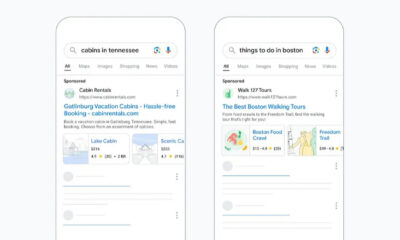PPC
How to Maximize Google Ads Results With a Low Budget

How much Google Ads budget a business allocates to campaigns has been a question that has lingered for years. Whilst paid marketers around the world would say that their channel should get the most spend, in reality, for lots of businesses the money just isn’t there.
So what does this mean? Is that it for small businesses? Does this mean that Google is a no-go zone? This is most certainly not the case. In this post, I’ll outline the key rules to live by for any low-spending account, as well as discuss the best approaches for making sure you’re making the most of your money.
Important Tip 1. Plug the Leaks
As any good home energy expert will tell you, the key to saving money is to stop heat going out (weird analogy but stick with me!) – no more so is this true than in this situation.
Often on accounts, you see search queries come in that are completely and utterly irrelevant. In larger accounts, this isn’t normally too much of an issue. Typically, advertisers will review the number of clicks and decide whether or not it’s an urgent task based on spend accrued. However, with smaller accounts, this becomes more of an issue.
So what can you do? Well, it’s time to get your detective cap on and find the cause of the leak! Common areas to start with are:
Networks
By default, Google recommends showing content on search partners. Despite this, search partner performance can often be poor when compared to Google’s alternative networks. If you notice performance dipping here, turn content off and help tighten up the ship!
Search Queries
This is an immediate go-to when thinking of tightening up spend. With the ever-increasing blurred lines when it comes to what match types actually show for, the tightening up of search queries has arguably never been so important.
When reviewing search queries, it’s important to remember that not only should you take user searches at face value, but you should also consider asking how your ads show. Is there a theme across search queries? Are lots of irrelevant terms showing at once? Trying to uncover the cause of the issue can often be more beneficial and time-saving than removing queries on a case-by-case basis, so again pop on your detective hat, grab your pipe and get digging Sherlock!
Scheduling
Often forgotten, scheduling is a really easy fix when plugging up lost spend. Put simply, are consumers engaging with your brand at 2-3 am? No? Then pause your ads. It’s as simple as that.
Location Targeting
Until recently I wouldn’t have thought about adding in location targeting to this article. With many advertisers viewing this element of Google as a ‘point on a map and this is where ads show’, Google’s shift towards ‘Presence and Interest’ targeting has now become a much bigger priority.
By default, Google will target ads based on presence and interest – meaning it will target ads to users based in, frequently in, or ‘interested in’ your target location. Now I don’t know about you, but I feel that the majority of advertisers won’t really care if users are only interested in their target location. They’ll want ads to show to users actually IN their location. So don’t forget to check this out as you could find that this has been a costly leak!
Important Tip 2. Remember Your Key Business Aims
Whilst this should be the primary focus for any Google ads campaign (and really any marketing campaign in general!) no more does this ring true than with small spending accounts. Whether you’re an agency running a client account, an in-house marketer, or even a business owner, there’s nothing worse than spending what little money you do have available on irrelevant focuses. If your aim is to raise revenue, focus on that. If you need to build the brand, then focus on awareness. Regardless of your strategic drivers, try to avoid blurring the lines.
This is quite a simplistic way of thinking. Often these goals overlap and intertwine, but by thinking specifically about what one strategic driver you’re hoping to get from your Google campaigns, you’ll find that you’re able to be much more competitive in ad auctions. This is instead of spreading yourself too thin and chasing numerous business aims which could in fact be pushing you further away from your goals.
Important Tip 3. Don’t Silo Yourself
Transitioning nicely off the last point, it can be simple to sometimes forget what other arms of marketing are doing. If you work in an agency it can be easy to just live within your team. Only venturing out once an hour to grab a coffee and bumping into someone from SEO or Social. I’m afraid to tell you however that when spend is tight, you HAVE to do more than that.
A simple conversation with wider teams can help departments understand where paid campaigns can sit within that framework. It’s easy to forget that there is nothing stronger from a marketing campaign than a unified message with consistent aims and a tone of voice. So reach out! How can other teams help you? Is there an area you can’t compete on, but that organically isn’t as competitive? Have you noticed perhaps a gap in the market from a social perspective? Reaching out for help and support will often have beneficial, piggyback effects on your campaigns – so get chatting!
I should at this point say that this also goes if you work in-house or are running marketing solo – understanding the bigger picture isn’t just specific to agency workers.
Conclusion
When it comes to Google ads, if you don’t have the money for major campaigns, I hope you now know that there are steps you can take to see incremental success.
I will end with arguably the most important piece of information. If the money isn’t there to see reasonable results, wait until it is. There’s nothing worse than spending what little you have on campaigns where you’ll likely not prove very competitive. Follow your gut, wait and when you do have the money, don’t forget to come back to this handy article for tips on how best to spend it.

















You must be logged in to post a comment Login